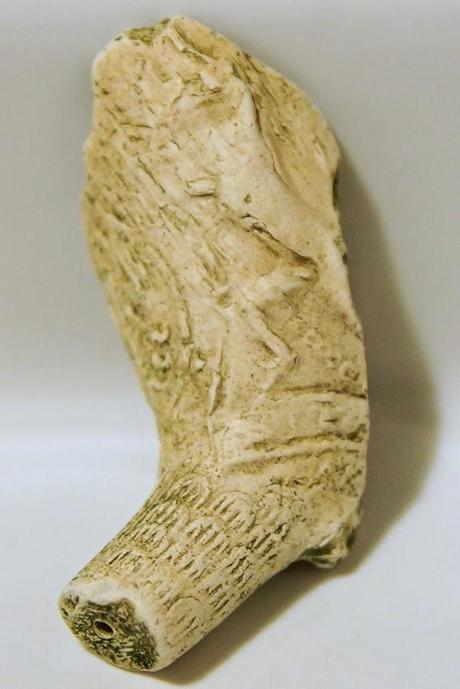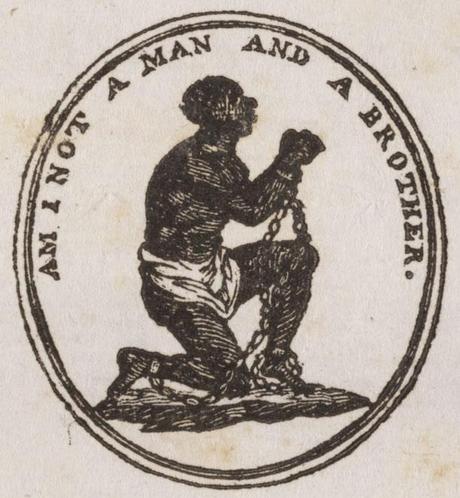
Only part of the design remains, and it has suffered from its time in the river. However, to one side of a central image (largely missing and impossible to decipher) is a naked man stood with chain around one leg.
One possibility is that this design commemorated the end of slavery. Earlier pipes had featured the image of a man kneeling in chains, originally distributed on Wedgewood cameos with the anti-slavery slogan 'Am I not a man and a brother?'. The use of anti-slavery imagery on tobacco pipes was of course horribly ironic, since tobacco was largely produced on Virginian plantations using slave labor.

Later pipes showed standing figures representing liberty: perhaps this is one of these, with the man standing, arms raised, as his chains fall away. With so much of the imagery missing, however, it is very difficult to draw firm conclusions: if anyone has further information or ideas, I would be very glad to hear them. (A larger image of the pipe bowl is available on Flickr.)

